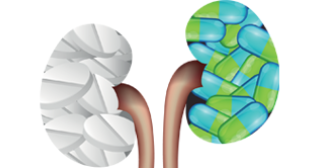}}drupal-data/images/blog-details.png)
What Is Lithotripsy Treatment?
What is the Treatment?
Lithotripsy gets it name from two Greek words, litho which translates to stone, and trip, which means to break. Lithotripsy is a non-invasive medical routine which makes use of high-energy shock waves to fragment and break down stones developed in the kidney, gallbladder, and ureters. The shock wave generated is used to focus on the stone and disintegrate them so that can they be reduced to small bits thus facilitating an easy passage out of the body through urine. In addition, as the shock wave is generated outside the body, this treatment also known as extracorporeal shock wave lithotripsy (ESWL) – in medical terms.
Why is this Required?
Although most stones can get corrected via oral medications, certain stones which are larger in size (4 cm and 2 cm) can cause severe distress in the affected region and even block urine flow. These stones if left untreated can lead to urinary tract infections, high fever, and even kidney damage. Consequently, Lithotripsy is a great technique to get rid of these troublesome stones from the body without the need for operating on the patient.
However, it needs to be mentioned that in case an individual has one of the following conditions, Lithotripsy may not be recommended:
- Pregnancy as the X-rays and sound waves may harm the fetus
- Bleeding disorders
- Infection of kidney or urinary tract
- A severe case of obesity
- An aortic aneurysm
- Severe skeletal abnormalities
The Procedure
Lithotripsy is usually a day-stay procedure and is arranged through a urologist after conducting tests to determine suitability for the treatment. These tests may include imaging tests such as an ultrasound & X-ray to help locate the stones, blood and urine tests, and an ECG to evaluate the electrical activity of the heart.
Before the procedure, it’s recommended that the patient avoid eating or drinking after midnight (at least six hours). Additionally, it’s suggested that the patient inform the doctor about any allergies he/she might have while disclosing information on medications or supplements he/she might currently be taking.
General anesthesia is used during the lithotripsy procedure to ensure that the patient is asleep through the procedure. There are two reasons for an anesthetic: One because the shock waves are intense and can generate quite a bit of punch which can, in turn, cause pain. Secondly, to ensure that the person is steady and not moving as the shock waves are targeted at the stone wherever they might be located.
Thereon, a rubber/silicone pad covered with a special gel is placed against the patient’s skin to ensure that the shock waves are effectively transmitted through the skin. Following which, to refine the focal point, an ultrasound or x-ray is used to focus the shock waves on the kidney stone.
In most cases, the procedure lasts about an hour – depending upon the number of stones and their size. However, in case of some individuals where the stone fragments are found to be too large, a stent might be inserted into the ureter prior to the lithotripsy procedure. A stent is a plastic tube that allows the passage of gravel and urine after the procedure is completed. The stent will be taken off after a few days or weeks.
Does it Hurt?
Considering Anesthesia is administered, the patient will be asleep through the procedure thus preventing any pain during surgery. That being said, there might be pain and bruising around the skin and around the affected area post-surgery. There might also be a slight discomfort around the back region. In case a stent is placed, there’s bound to be soreness and tenderness as well. In most cases, this pain can be properly managed through the help of pain-relieving medications that can help in alleviating any discomfort experienced.
What’s the Recovery Time?
Considering the fact that Lithotripsy is performed as an outpatient procedure, the patient can go home after taking some rest in the recovery room. However, full recovery might take anywhere between 1-2 weeks and a feeling of fatigue is common during this period. Additionally, a course of antibiotics might also be prescribed in certain cases to help prevent any infection from forming. Once fully recovered, the patient can resume work and any exercise activities like before without any hindrance.



















